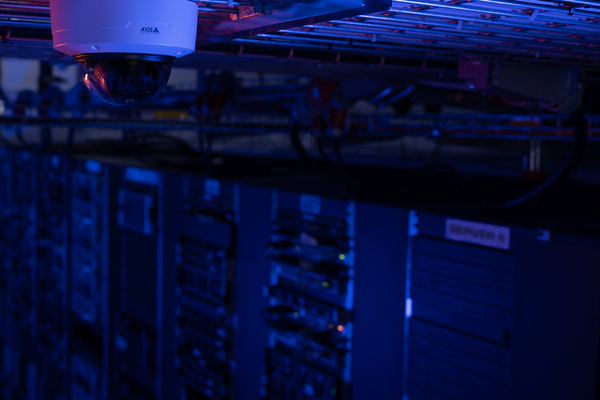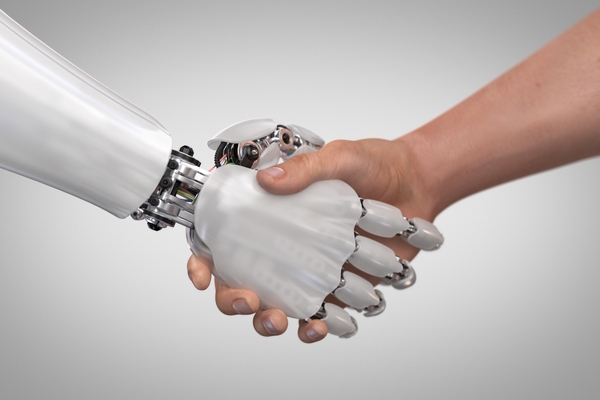The future of internal comms is led by people, but assisted by AI
Sponsored by Poppulo
To get an idea about the future of employee communications, take a look back. Way back. Think back to before the internet, before the phone, before the telegraph. You can go as far back as you want.
Because it’s the past that provides a clear look into the future. Communication has been an evolving art form for as long as people have existed. And it will continue to evolve. Why? Because communication is vital. And when things are vital, innovation and effort drive evolution.
So, of course, we’ve developed more ways to communicate, and the process of using these new tools has become easier. Which is great! But for businesses, that also introduces a new challenge: ensuring comms absorption and retention. Because as every comms team knows, the act of sending a message does not mean the message was received or that it had the desired impact.
Which brings us to AI. Does it have a place in the employee comms landscape? Absolutely. AI – used effectively – can help communicators better reach their people, on the channels that matter, in a more measurable way. It could even be the natural evolution of communications. Let’s dive into what you should know about AI for employee communications.
AI… now what?
When ChatGPT launched, it enveloped the news cycle. Within a few months, the general public went from not understanding what generative AI was to being afraid that AI would replace them. Skynet references abounded and Terminator memes reigned supreme.
And while the possible applications of the technology are incredible, Generative AI hit the scene like those scooter and other mobility solution providers a few years ago—the scooters appeared in cities overnight, leaving local governments to figure out what to do about them. Surprise.
With people from a variety of departments accessing free generative AI tools, businesses were soon forced to figure out what to do about AI. Among the most interested parties within businesses was internal communications.
So, software vendors raced to market with AI tools. But were they the right application of AI? Were they tailored to the needs of communicators? Nope – it was akin to that fleet of scooters left on city sidewalks. AI was there, but how to use it, where to use it and why to use it were all afterthoughts.
AI for employee comms: what it is and what it isn’t
AI is not the solution to every employee communications challenge. The value of generative AI for comms teams lies in faster time to market for quality content, as well as optimising and personalising that content for the key comms channels in use across large enterprises. But that timesaving is also where things get interesting. Saving time on content optimisation and measurement leaves time for strategic alignment and measurement. Ah, strategic alignment and measurement.
Being able to better understand key business priorities and create measurable comms campaigns that support those initiatives: that’s where employee communicators should spend more of their time. If you’re interested in seeing how Poppulo’s new AI features enable exactly that, register to attend this product launch webinar.
What communicators need from AI
Contrary to what people might think, employee comms teams don’t simply write what they want straight into their comms distribution platforms. That’s just not how they work. Communicators first need to work with stakeholders to approve content, and that is typically done outside any employee comms platform. That said, employee comms teams can benefit from pasting approved content into a comms tool and seeing multiple content suggestions tailored to the variety of channels needed to reach today’s workforce. They need options based on approved content. That saves time. That’s AI with a purpose.
Just imagine getting your anchor content approved, then selecting AI-generated variations for the channels you need – mobile, digital signage, email and more.
As communication evolves, individual comms preferences have too. AI can and should help you meet individual comms preferences at scale.
And while many of the rushed AI tools for comms solely focus on how AI can help with content creation, they haven’t had a similar focus on measurement – and what you can’t measure, you can’t assess or improve. Non-generative AI should be employed to streamline comms analysis, providing insight into how content performs across channels. With AI, your comms platform should surface trends, create dashboards and, ultimately, simplify reporting.
It’s this functionality that will help you improve your comms campaigns, further cementing the strategic role comms teams can play. AI – generative and non-generative – is part of the future of internal communications. For more insight into the intersection of employee communications and AI, check out this free whitepaper.
What businesses need from AI
When it comes to AI for employee comms, security and governance are critical. It’s important to take the time to get AI privacy and security right, because if your comms platform, and the technology it encompasses, isn’tenterprise-grade, it can’t scale and it can’t help drive comms to the people that need it. By enabling decentralised communicators – because that’s the reality most businesses face – to adhere to the same standards for comms quality and consistency, businesses can empower their teams to deliver the impact needed. And let’s face it, if you don’t set clear policies and provide access to AI in a thoughtful way, people will find other AI tools that might compromise security.
The future looks bright
AI – generative and non-generative – will help communicators reduce the time required for channel-specific content creation, better understand what resonates and deliver better comms faster. The evolution of communications has brought us here. Faster content creation for the channels that matter to your employees. Simplified analysis. Better, quicker, more measurable comms – that’s what AI can deliver for businesses. And for communicators, it can deliver a more strategic role within the businesses they serve.
For more information, visit poppulo.com

Business Reporter Team
Related Articles
Most Viewed
Winston House, 3rd Floor, Units 306-309, 2-4 Dollis Park, London, N3 1HF
23-29 Hendon Lane, London, N3 1RT
020 8349 4363
© 2025, Lyonsdown Limited. Business Reporter® is a registered trademark of Lyonsdown Ltd. VAT registration number: 830519543





